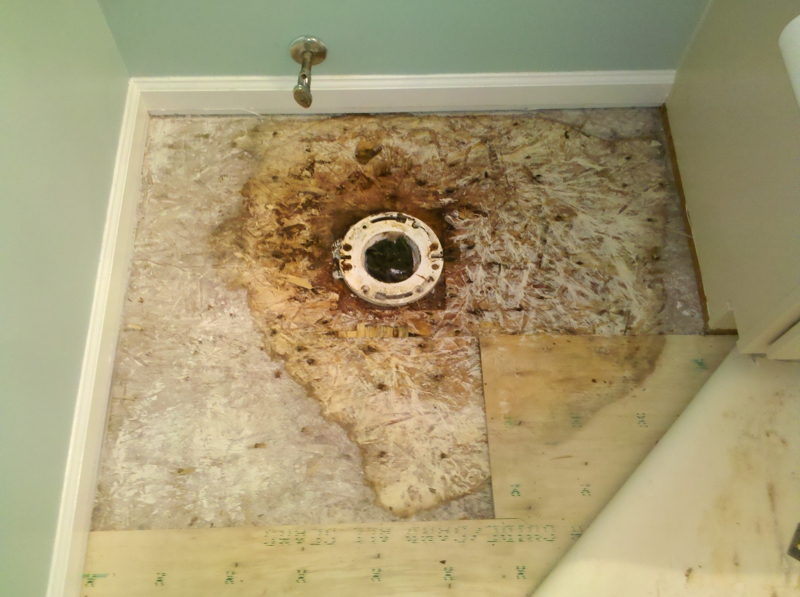Searching for Signs of Water Damage in the Bathroom
Searching for Signs of Water Damage in the Bathroom
Blog Article
They are making several great observations related to How to Repair and Prevent Bathroom Water Damage in general in this article following next.

The shower room is very susceptible for damp build-up as well as prospective water damage because of the regular use of water in it. This short article provides easy evaluation techniques to help detecting water damage hazards.
The constant use water in the washroom makes it exceptionally prone for damp build-up as well as potential water damage. By inspecting it regularly, you can reduce water relevant problems.
The complying with set of evaluations is easy to execute as well as ought to be done once in every three months in order to maintain your washroom healthy as well as to stop possible water damages caused by the bath tub, the shower, pipe joints and plumbing, sinks, cupboards, and the commode
Do not disregard carrying out these examinations as well as be thorough while executing them. Bear in mind that these straightforward evaluations can conserve you a lot of cash by supplying very early indications for water damages
Tub and also Shower
The shower as well as bathtub need special interest and upkeep. Check the floor tiles and change if broken. See to it that there is no missing cement between the floor tiles. Examine and also replace fractured caulking at joints where the walls fulfill the floor or the bath tub. Clogged drains pipes and also pipes troubles will protect against the bathtub from drying out and may show major troubles beneath the tub. Seek advice from an expert quickly to prevent architectural damages. Take note of stainings or soft areas around the tub wall surfaces as they may suggest an inner leak.
Plumbing
Signs for water damage are tough to detect because the majority of pipes are set up inside the wall surfaces.
Pay unique attention to flooring and also walls moisture as well as discolorations as they may suggest an undetectable plumbing trouble. Check wetness degrees in adjacent areas as well.
Sinks as well as Cabinets
Sinks as well as closets are exposed to moisture as well as moisture day-to-day and also are frequently neglected. Check consistently under the sink and on the counter top over it. Fix any kind of drip in the trap as it may suggest drain issues. Browse the sink, slow-moving draining pipelines may indicate a blocked drain. Replace sink seals if they are broken or loosened.
The Bathroom
The commode is an at risk water joint. Check the water lines and search for leaks around the toilet seat, in the hose pipe, as well as under the water storage tank. If you discover any type of indications of wetness on the flooring around the bathroom, look for leakages in the toilet edge as well as storage tank seals.
Know that hanging commode dish antiperspirants boosts the possibilities for blockages.
TIPS TO PREVENT WATER DAMAGE IN THE BATHROOM
The average household uses approximately 80-100 gallons of water per person per day. For a family of 4, that's almost 2,500 gallons of water a week! The largest portion of this consumption comes from bathroom use. Flushing the toilet uses the most water, followed by taking a shower or bath. With that much water running through the home, water damage in the bathroom is bound to happen. Knowing how to spot signs of a water leak is essential to preventing long-term damage. This guide provides you with tips to reduce the impact of water damage on your bathroom.
CAUSES OF BATHROOM WATER DAMAGE
Pipe breaks are the most common cause of water damage we see in our daily jobs. The age of a pipe plays a large role in a pipe break as well as corrosion. Over time, the metal begins to break down, allowing water to escape. Frozen pipe breaks are also a concern in the winter months. Toilet overflows caused by paper products or children flushing inappropriate items. Degraded caulking around the toilet or bathtub can allow water seepage, sometimes behind the fixture, into the subfloor or walls. Condensation forms when the water in a pipe is cooler than the air temperature. Beads of water form on the exterior of the pipes, sometimes so much so that the water begins to drip and pool below. Sink or shower backups created by poor drainage. HOW TO PREVENT WATER DAMAGE IN YOUR BATHROOM
Inspect your toilet supply line for worn or frayed hoses and replace them as needed. Winterize your plumbing to prevent a frozen pipe break. Use vent fans to prevent condensation that can lead to mold growth. Routinely check and replace degraded caulking around your toilet or bathtub. Increase the temperature in your toilet tank and insulate your pipes during the warm summer months to keep condensation from forming. Use child safety locks on the toilets. Flush only toilet paper. "Flushable" wet wipes are actually not good for your plumbing system. Additionally, feminine hygiene products should not be flushed. Prevent water from escaping the tub or shower. Make sure shower curtains are in good condition. Inspect shower doors and replace the seal strip if necessary. Wipe up any water that accumulates on the floor and use bath mats. Water left to sit can cause damage to the tiles and flooring. Refrain from using bath products containing heavy oils to avoid a clogged drain.

Do you appreciate reading up on Common Causes of Water Damage in a Bathroom? Give feedback below. We'd be pleased to hear your thoughts about this article. In hopes that you visit us again in the near future. Sharing is caring. One never knows, you will be helping someone out. Thanks a bunch for your time. Please check our blog back soon.
Book Maintenance Report this page